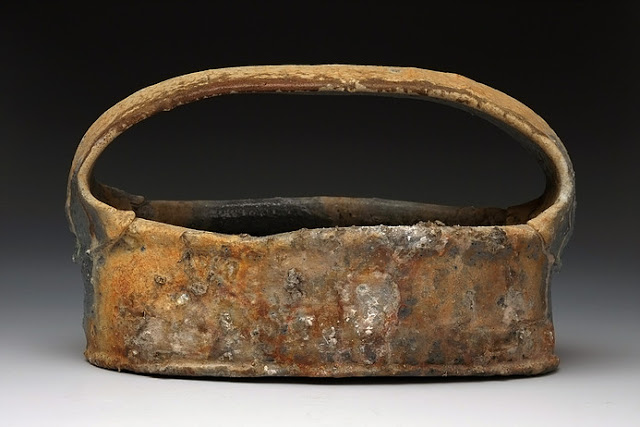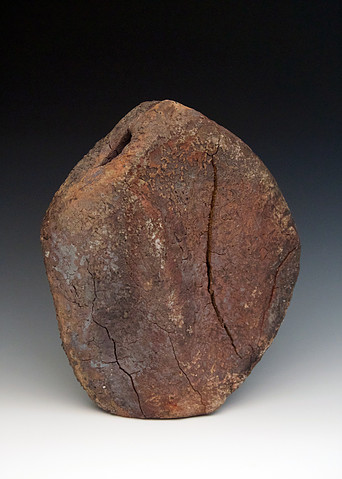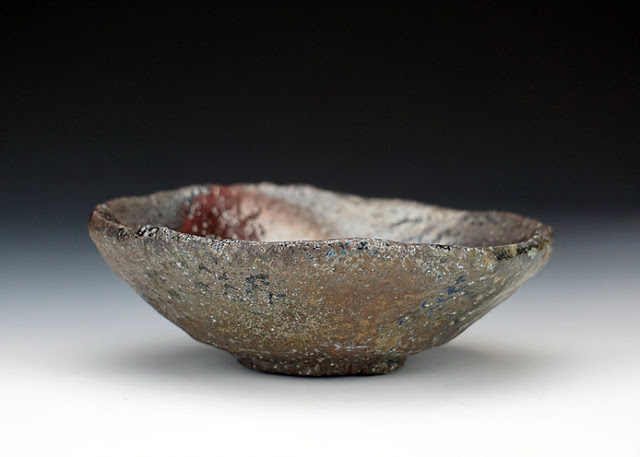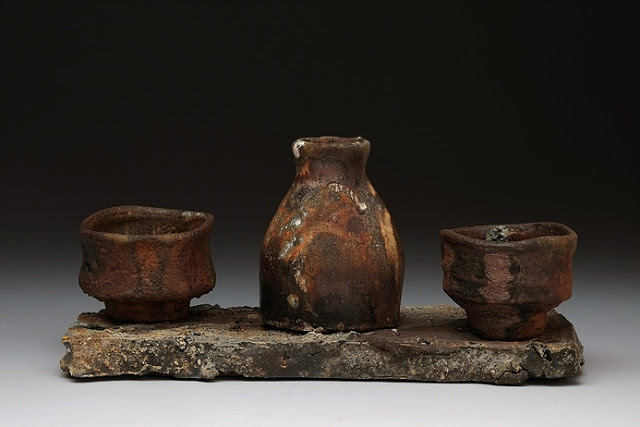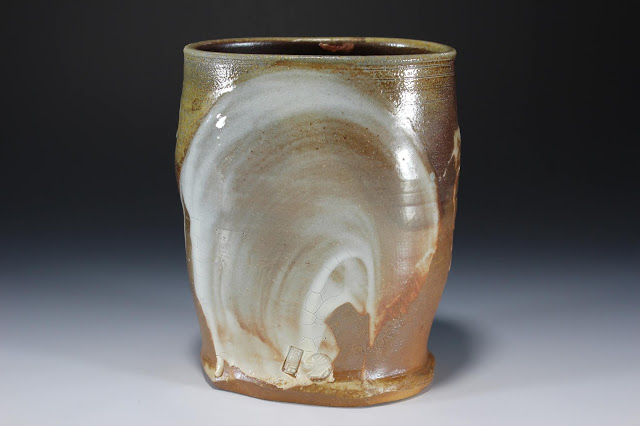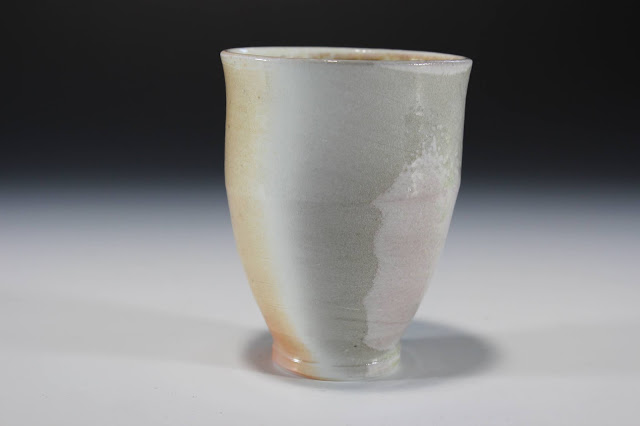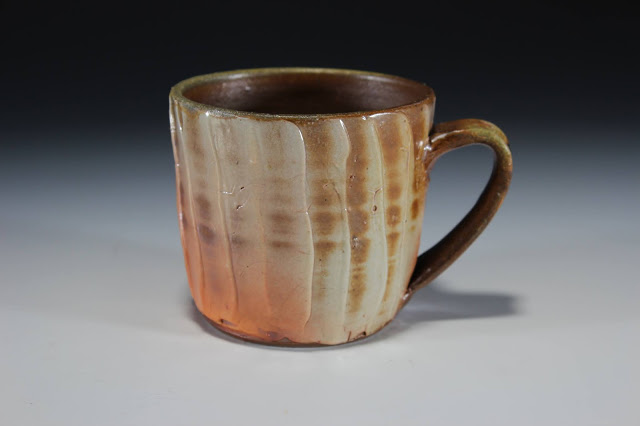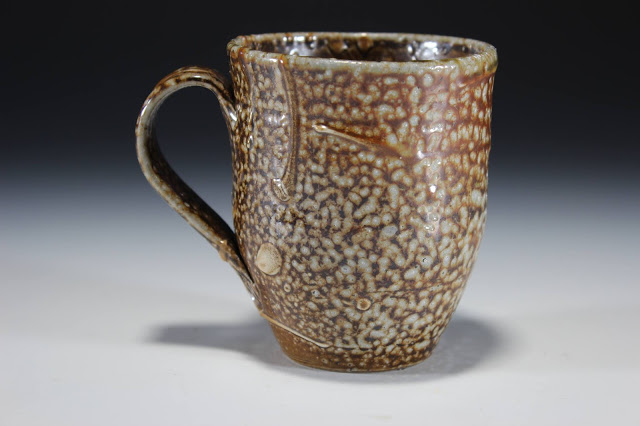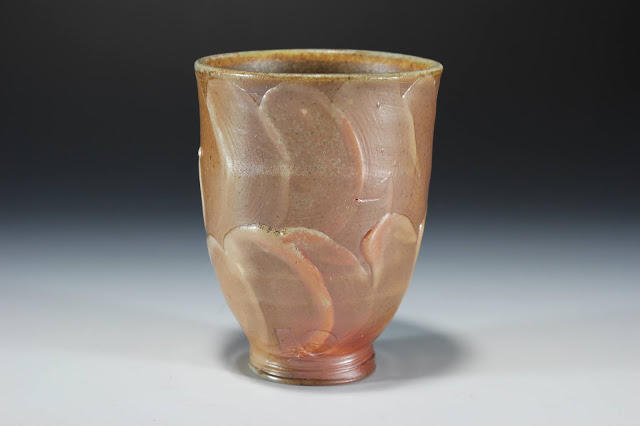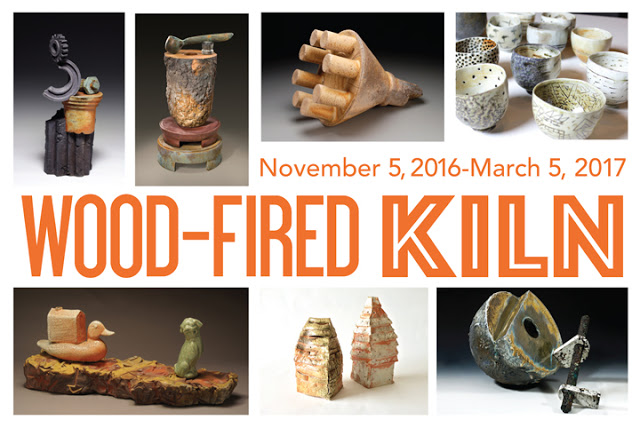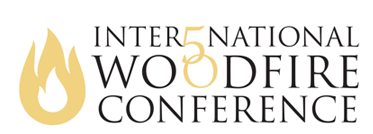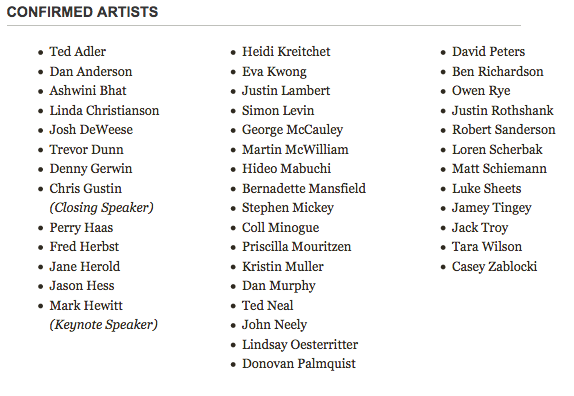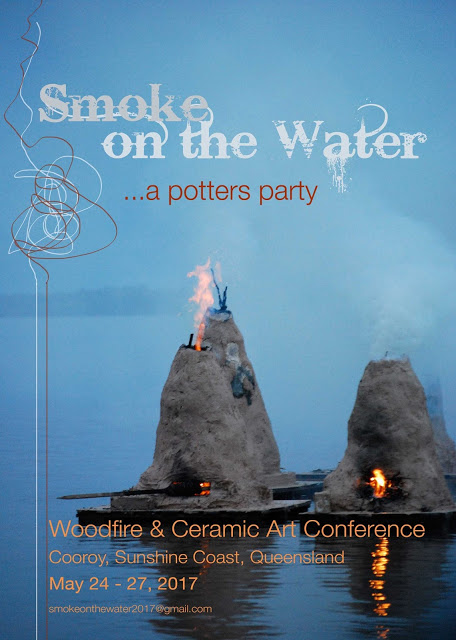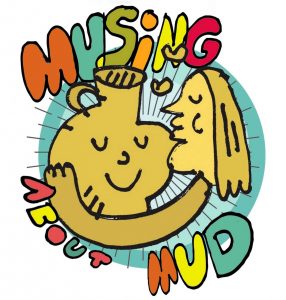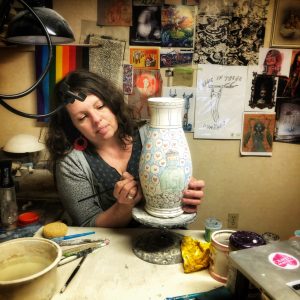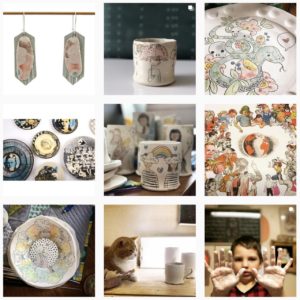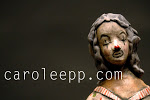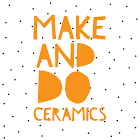emerging artist: Seth Charles
respond to the challenge that comes from making utilitarian work that
will become an intimate part of the daily lives of others. My work is
rooted in functional pottery, but I also understand the contemplative
role a pot can play in people’s daily lives, viewing the work in much
same way that one might view a painting or a sculpture. My work is not
highly decorated or ornate, but my forms and surfaces are very
intentional. Driven by traditional pottery forms, my primary concern is
the complex relationships between the form of the pot, the surfaces, and
the firing. I am very interested in the subtle differences that make
two very similar pots very different. I believe in making work that is
well made, but not precise so that no two pieces are ever the same.
My primary inspirations are the Japanese
concepts of wabi and sabi that view imperfection and irregularity as
forms of beauty. Shiho Kanzaki, in the History of Shigiraki Pottery,
defines wabi and sabi as “the fulfillment of sensibility beyond the
incompleteness of material things.” Wabi may be defined with words like:
asymmetry, simplicity, wizened austerity, naturalness, profound subtly,
and unconditional freedom. Sabi may be defined with words like:
restrained refinement and luster.
My work is inspired by the irregular
beauty of the natural world. It is easy to find geological analogies in
my work: rock fissures, lichen, moss, eroding wood, and dry lake beds to
name a few. Much of what happens in nature evolves slowly over time, as
does my making process. My pottery begins as wheel thrown and
hand-built forms that are altered in various ways allowing the natural
development of gesture and asymmetry. While I may have a preconceived
notion of the form, I give myself the freedom to stop and reflect along
the way, often times stopping before creating what I conceived,
discovering the form during the making process. It is this process that
preserves the natural, inherent, plastic quality of the clay without it
being over worked. I embrace the craft skills and procedures every
potter needs to control and manipulate wet clay, while allowing myself
the freedom to keep each piece fresh and different. It is
through an understanding of form, function, and the vocabulary of
pottery that the vessels created can be viewed as abstract sculptural
objects while retaining their function.
attempt to make pots that reward examination and reflection. The wood
firing process adds another dimension to the composition, producing
surfaces that are rich with complexities. This firing method creates a
varied palette of colors and textures not achievable in any other way.
The work is loaded in the kiln either unglazed or with a simple glaze
that is receptive to ash and flame. Similar to geologic actions, heat
and pressure is exerted on the work. During the course of the firings,
the draft created by the chimney pulls wood ash and alkaline vapors
released by the heat of the fire through the kiln. The ash is deposited
on the ware in the path of the flame, and records the thoughts and
process of the maker and the kiln’s fire. I feel that wood fired
pots have the ability to bring us closer to earth and to nature while
creating a direct dialog between the user and the maker. – Seth Charles

